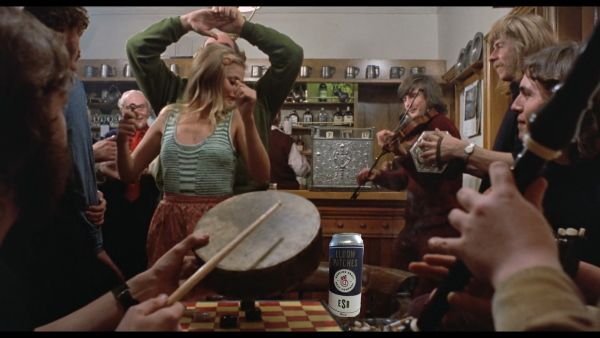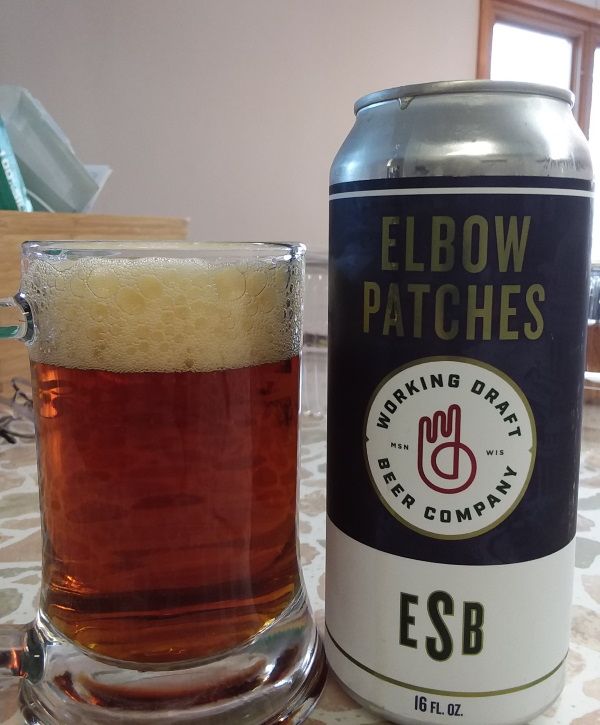"Let's go down the pub for a piss up!"
"A pint of your best bitter, guvnor!"
"Cor, that's a good ale!"
"Last call is 11 o'clock?! Bloody hell!"
No doubt we would have fit right in with the locals.
The trek would have afforded us the opportunity to head to
some pubs and indulge in some English beers and/or ales. While I am quite
ignorant about beer generally, it is especially the case with brews from the
British Isles as evidenced by my recent encounter with an English style porter.
Over there you find a whole different type of porter in addition to milds and
bitters - beers with little carbonation served at warmer than straight-out-of-the-refrigerator
temperatures. Pubs and their beer engines are guarded day and night by CAMRA
members who are like the Hells Angels and they help preserve the beer and
brewing heritage that has accumulated over the centuries.
Not really but I hear that some CAMRA chaps can really be pains
in the arse.
Despite the prevalence of adjunct lagers today, people on
these shores in 1776 weren't swillin' Bud. They were drinking beers based on
English styles no doubt adapted to circumstances in the colonies. For example,
it seems that molasses was a popular ingredient back then. George Washington is
reputed to have been a homebrewer of no mean skill but I'd bet his brews were
English styles or adaptations thereof.
While contemporary American brewers have leeched pretty much
anything English out of the IPA outside of those three letters, you'd probably
have to look elsewhere for the influence of English brewing here. The amber ale
comes to mind and, from what I've read, it's a variation on the English pale
ale. A lot of beers apparently are members of the pale ale family. I take it
this is because "pale" ranges from gold to brown – basically anything
is pale that's not obsidian here. One beer style that isn't obsidian in color is
the ESB.
I figured that, if Henry VIII wasn't quaffing ESB as he went
about looking for new wives and ridding his lands of Catholicism, then at least
Charles Dickens' characters were drinking the stuff after cleaning chimneys and
emptying their chamber pots into the Thames. But no.
The ESB dates back to the late 1960s when the venerable English
brewer Fuller's introduced their Winter Bitter in 1969. It was rechristened an
ESB a couple years later, it seems. Extra Special Bitter sounds right to my
ears but Extra Strong Bitter also passes muster from what I can tell. It sounds
like ESB was born as more marketing gambit than new style back when The Beatles
were breaking up. (Not unlike the IPA here these days.) I mean, it's not like
there weren't headier than average bitters out there.
So what's a bitter? My understanding is that it's simply a type of pale ale that's more bitter than the mild. Not 100 I.B.U. lunacy, mind you, just more hops to balance the maltiness of a mild.
Recently the folks at Madison's Working Draft Beer Company
brewed an Extra Special Bitter called Elbow Patches. Having finished off a
4-pack of English porter, I figured it was time to move onto an ESB. This was
Elbow Patches Chapter 2 and I'm not sure if this means that it's their second batch
of the beer, their second ESB recipe, or something else. I don't associate Working
Draft with English beer styles (no, hazy IPAs don't count) but they may be the Barclay,
Perkins & Co. of Madison for all I know.
Working Draft notes the beer was brewed with Fuggle and East
Kent Goldings hops. They provided a herbal scent while the Pale and Crystal
Maris Otter malts smell like biscuit along with a raisin-caramel sweetness.
I could taste the herbal hoppiness, though it wasn't particulary
bitter, but a more than moderate sweetness tasted like pear rather than caramel
to me. There was a really nice nutty flavor that reminded me of raw pecans as
well as a fairly strong leathery taste. While it didn't taste very fizzy, that
is, it didn't taste like a bunch of bubbles were rolling across my tongue, the
beer had a quite noticeable astringency to it.
That nutty/leathery flavor lingered and was joined by some
hoppy bitterness and a hint of residual sweetness after the liquid had gone down
into my guttiwuts.
A friend of mine who lived in London for a spell commented
to me that he thought this was a fine beer but not flat enough. I agree. Although
I liked Elbow Patches, I wish it tasted a bit less astringent. For me, it
detracted from the beer's nice sweetness – not too much, not too little. Similarly,
I loved the nutty taste but felt that the leather flavor was a little overpowering.
I would prefer the flavors to be more balanced. Having said that, I truly appreciated
the herbal hop and nutty tastes which I feel are in short supply these days.
Here's hoping there's a chapter 3.
Junk food pairing: I did my tasting on a Sunday so, if you cannot
find any appropriate crisps from England, open a bag of Old Dutch Prime Rib potato
chips. Er, crisps.


No comments:
Post a Comment